Movie Review – Woman In Black, The
Unnerving, incredibly atmospheric chiller that eschews gore for spine-tingling thrills, The Woman In Black is a dead-set fright-fest. It’s the kind of film you should probably watch in the daytime, with the sound down low (in other words, exactly the opposite of what I did) so it doesn’t scare you too much: this film is startlingly good considering it’s basically Harry Potter in a haunted house for an hour and a half, and much better than the title might otherwise indicate. A truly scary gem.
– Summary –
Director : James Watkins
Year Of Release : 2012
Principal Cast : Daniel Dadcliffe, Ciaran Hinds, Janet McTeer, Liz White, Roger Allam, Tim McMullen, Shaun Dooley, Mary Stockley, Misha Handley.
Approx Running Time : 95 Minutes
Synopsis: A widower arrives in a small English town to settle the estate of a deceased inhabitant, only to discover a ghostly secret threatens the safety of every child in the villiage. A mysterious woman in black, who haunts the imperious estate house in which the man must settle the deeds, seeks revenge on losing her own son many years earlier.
What we think : Unnerving, incredibly atmospheric chiller that eschews gore for spine-tingling thrills, The Woman In Black is a dead-set fright-fest. It’s the kind of film you should probably watch in the daytime, with the sound down low (in other words, exactly the opposite of what I did) so it doesn’t scare you too much: this film is startlingly good considering it’s basically Harry Potter in a haunted house for an hour and a half, and much better than the title might otherwise indicate. A truly scary gem.
**********************
The title cover to The Woman In Black has a printed quote screaming at me to not “…watch it alone.” I might suggest to casual viewers of the scary film genre, that they might take this quote, and my hearty recommendation of it, as an indication as to the level of chills one will get while watching it. The Woman In Black is based on Susan Hill’s 1983 novel of the same name, a novel which has also enjoyed an incredibly successful run in London’s West End as a theater production; I guess it was only a matter of time before it became the focus of a feature film. The film, like the book, is a loosely termed “Gothic horror” piece, set in Edwardian era England and has that period drama flavoring to which the genre seems attracted as a setting for good scares. There’s something about scary films when there’s no reliance on technology within the narrative – there’s no cell-phones, no computers, no internet; instead, things move slower and have more reliance on character than the stuff they use, and it’s this kind of isolated tone that heightens our response to a good fright. Ghosts of days gone by have more resonance than those of more recent mortality; perhaps that’s just me. So how does a film where the atmosphere is the focus of the frights than any gore and gallons of blood stack up? Is The Woman In Black a successful foray into post-Harry Potter life for star Daniel Radcliffe? Or should he be wishing JK Rowling would hurry up and pen another book so he can get back to the things he knows about?
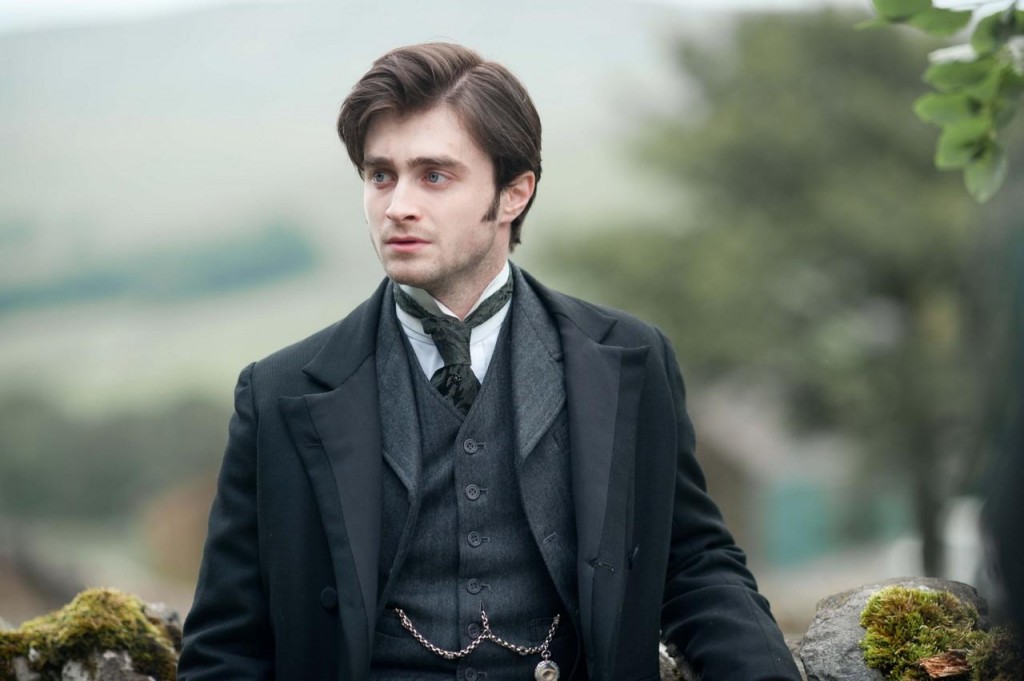
A young lawyer, Arthur Kipps (Daniel Radcliffe) is sent by his employer (Roger Allam) to close the estate of a recently deceased client and sell the property, a massive edifice known as Eel Marsh House. Kipps, penniless and recently widowed, leaving him alone with his young son Joseph (Misha Handley). Kipps knows he must execute the sale of Eel Marsh house to retain his job, and so he travels to the West Coast of England to the small town of Crythin Gifford, where his arrival is met with fear and distrust. It seems the locals don’t want him involved with anything at Eel Marsh House, for reasons that Kipps doesn’t fully understand. He meets a local man, Sam Daily (Ciaran Hinds), and Sam’s wife Elisabeth (Janet McTeer), who are also still somewhat grieving the loss of their own son, many years earlier. Elisabeth in particular seems to possess a strange link to the events of the town’s past, with her mental issues reflecting the fractured nature of the innocents lost to the mysterious Woman In Black. Local legend has it that is the Woman In Black is seen, by anyone, a child will die in some horrific way. As Kipps tries to understand the reason for the ghostly happenings around Eel Marsh House, the malevolent presence of the Woman in Black begins to grow more powerful and more threatening as the truth becomes apparent.
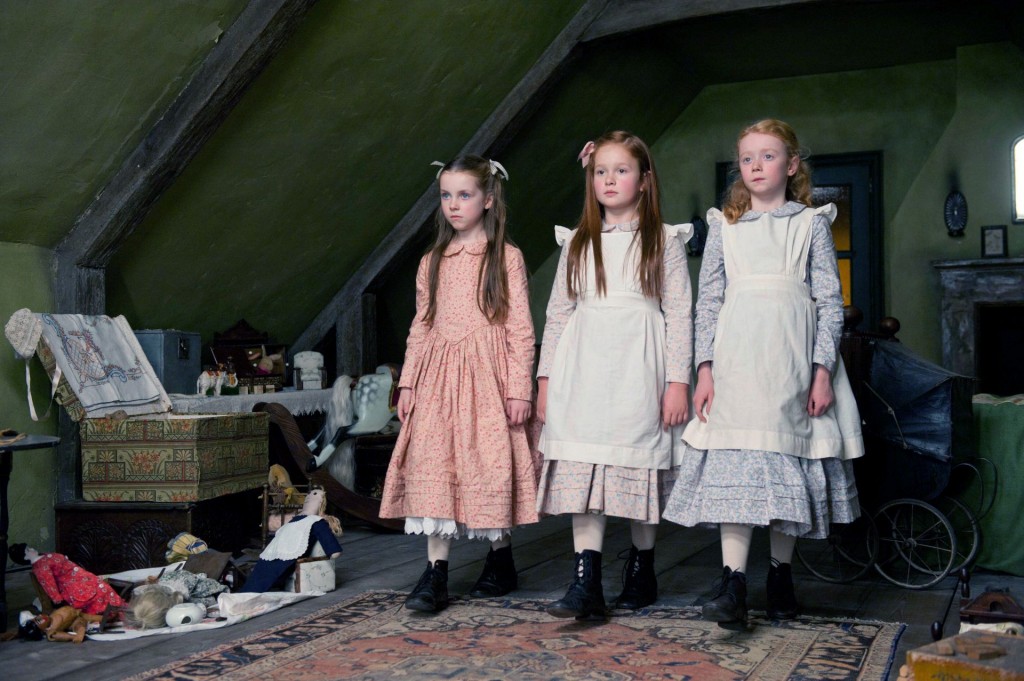
Newcomers to The Woman In Black, like myself, should heed the warning above: don’t watch it alone. This is a creepy, chilling film, a film where Daniel Radcliffe spends a great deal of time alone in an old, desolate and isolated house, being scared of doors opening, shadows jumping, and creepy ghostly things lurking just on the edge of eyesight. Much of the film is spent with Radcliffe looking fearful and scared for his life, and although you might think this repetitive jump-creep-scare style of film-making would become redundant after the fourth or fifth time, director James Watkins cannily keeps us interested in things by revealing elements of the central mystery just often enough to maintain our attention. The film’s core mystery is revealed slowly, perhaps some might say too slowly, but this gradual uncovering of the truth behind the ghostly Woman in Black allows time for us to marinate in the unknown, something too many ghost and horror films don’t do. It’s an effective methodology indeed.
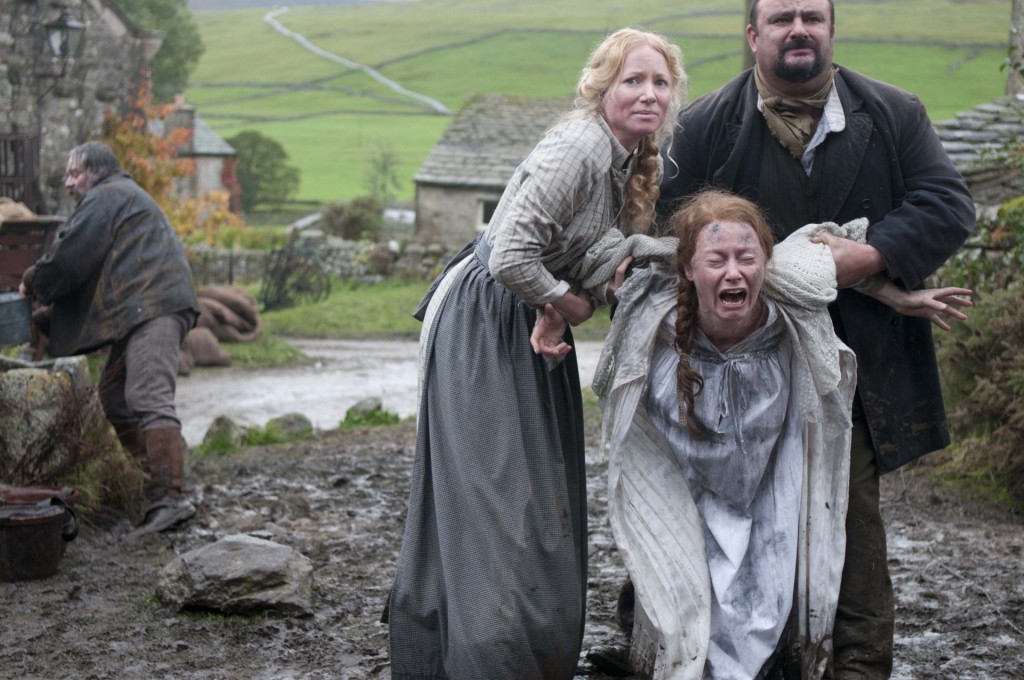
As much as a manly man like myself hates to admit it, this movie scared the shit out of me. I mean, really. The moody atmosphere, coupled with terrific production design, an eerie score and some razor-sharp sound design, serves up a maelstrom of dancing shadows, creepy head-fracking bump-in-the-night apparitions, some chilling story points and a deliciously skin-crawling experience. The film lacks significant gore, although there is a bit of blood scattered here and there (a young girl collapses in Kipps’ arms when she swallows lye, before the Woman takes her), but as a detractor of the overkill of gore-porn film-making, I was pleased this film went for a more cerebral story instead. This is a film that gets into your head, chilling the blood as apparitions appear at windows, in doorways and back behind Radcliffe as he explores the crevices of Eel Marsh House. For me, the whole idea of a ghostly apparition taking the souls of children fills me with more dread than I would have had were I not a parent, so youngsters watching this film who are yet to have kids might find this tangent storyline less gripping than they should.
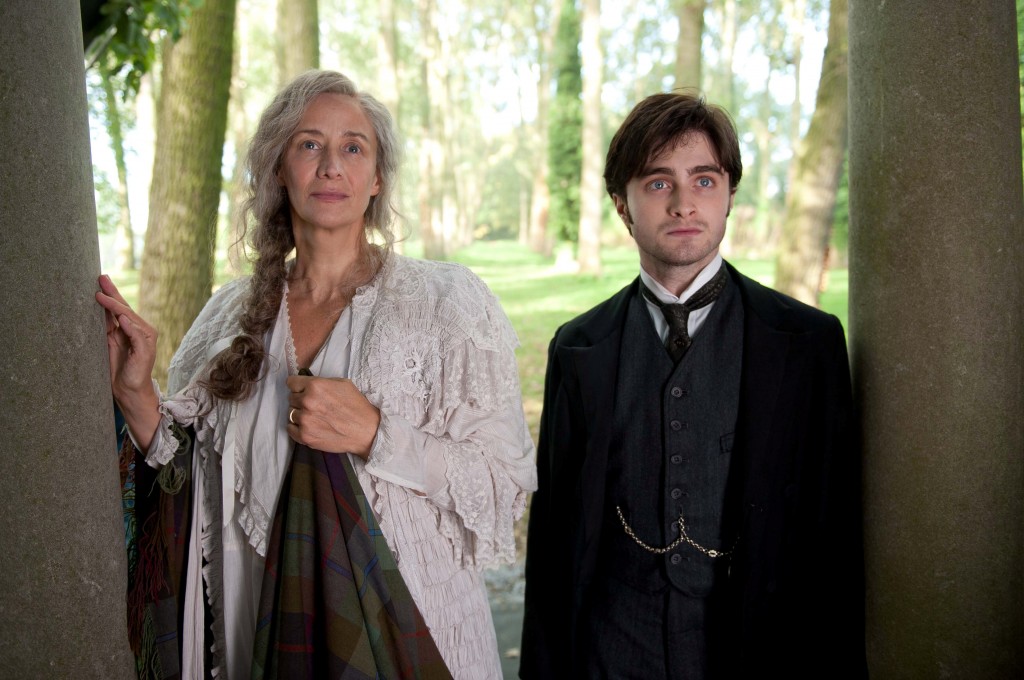
So how does Radcliffe handle himself in his first real major feature away from the relative security of Harry Potter? Really well, actually. Radcliffe brings a solemnity to Kipps that is interesting. Here’s a man bereaved, wondering if the visions he has of his now deceased wife (she died giving birth to his son) indicate the presence of an afterlife, thrust into a story in which there’s empirical proof of such a state. Radcliffe’s sadness, his melancholy at his own loss is supplanted by a desire to see the task at hand through, his resolute grief giving way to a sense of responsibility to try and help this Woman, who he sees as something of a kindred spirit. Radcliffe delivers the character with a nuance and believability of a maturing actor, drawing us into his plight as easily as you like, while his co-star, Ciaran hinds provides solid support as the older, yet more fearful, Sam. Hinds wouldn’t have been my first choice for the role of Sam, although I’m convinced the production made the right choice in the end here. Hinds is the broken soul of the village in which these events occur; rich, somewhat eccentric, and yet devoted to his wife, Sam is essentially a lifeline for Kipps’ gradual realisation of who and what the Woman in Black wants.
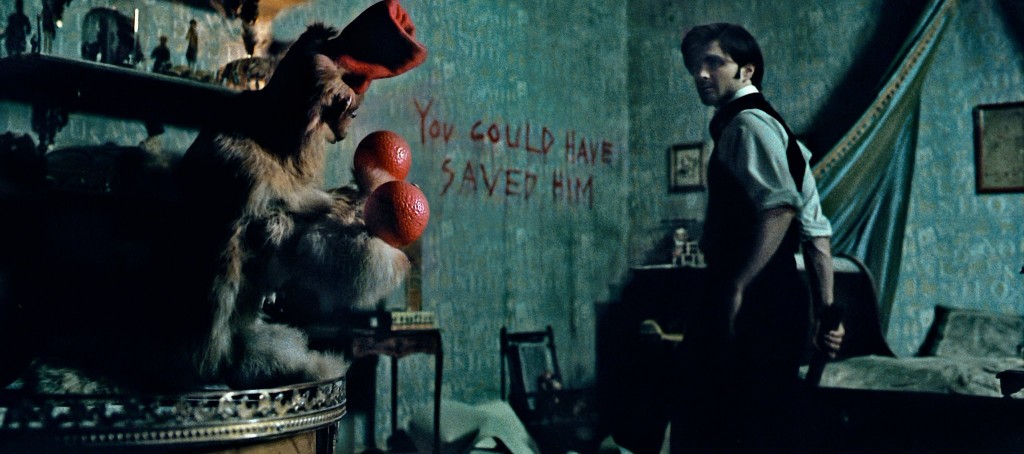
While the characters exist mainly to service the ghostly story, the ghostly story itself delivers plenty of nice scares and a moody, thrilling atmosphere if dread. The massive house in which Kipps stays, Eel Marsh Manor, is a crumbling, remote and run-down edifice, lacking good lighting and containing a number of maze-like rooms and passageways. The production design on the house interiors, which contain any number of dark corners and effective scare-elements – mirrors which reflect the dead, rocking chairs that rock without reason, and children’s wind-up toys that start and stop with no provocation – deliver all the jump-moments you could want. The film eschews rapidity over lengthy, tension-building moments for Kipps, who explores the house repeatedly trying to uncover the source of all the “noises”, leaving large gaps in the narrative where Radcliffe is simply wandering from room to room, hearing weird sounds and almost, nearly, not-quite seeing things out the corner of his eye. This is one of the most chilling elements of the film, really – a lot of the early scares come from the barely-seen, the peripheral-vision movements, which elicit more skin-creepy moments than the outright slam-bang boo moments. Blessedly almost free of the increasingly annoying “jump-cut bang” edit, whereby the film cuts to something scary accompanied by a large orchestral note which artificially scares the audience, The Woman In Black favors a more straightforward, eerie cinematic tone to its scares. The “what’s around the corner” camerawork, the far-distance focus pull on a ghost way off in the distance, and the use of things popping into frame without an edit to provoke it are genuinely scary moments, moreso than the jump cut method.
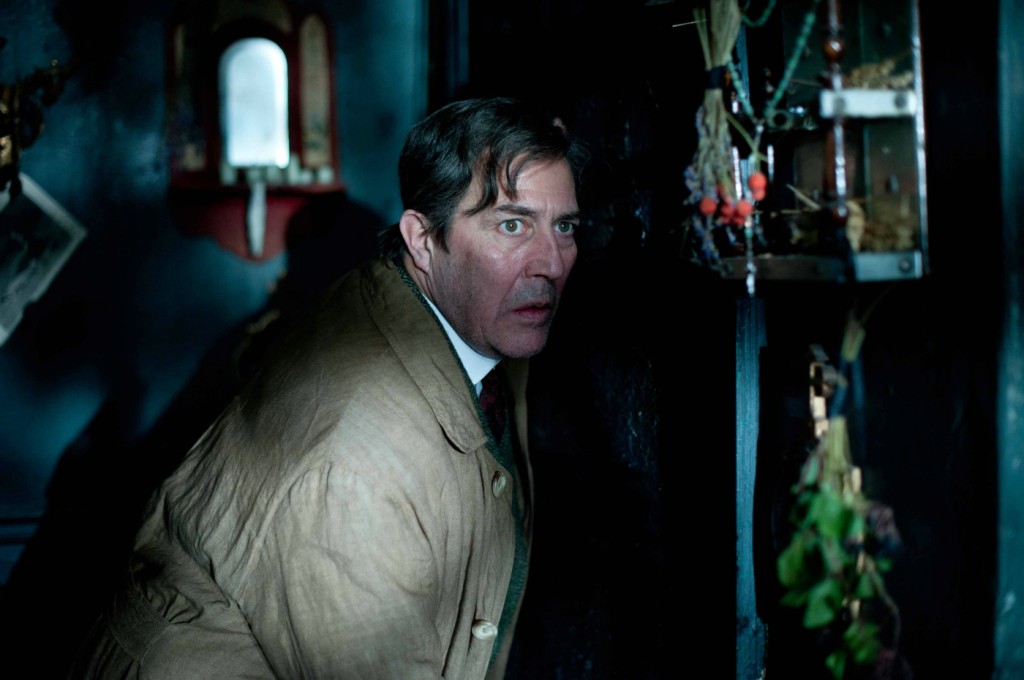
Working against the film is its often-clunky, often poorly delivered premise. The central conceit of the Woman, the motivations for her actions, and the general underlying rationale for the entire story to take place, lacks definition in this film version. The motivations of Kipps himself are pretty clear, but the background story to the Woman herself remain somewhat generic and “fill in the blanks” underscored. While I appreciated the way in which the mystery began to unravel throughout the film, I thought the emotional impact of the Woman’s story was the weakest part of the whole film. It’s as if the story’s balance was thrown out in trying to develop both Kipps, Sam, and the Woman was too much for the relatively short running time. Characters aside from the two leads (let’s face it, the Woman has almost no character definition other than to screech like a banshee and be as scary as hell!) are generic, merely props for Kipps to interact with that spend little time acting like real people and more like “scary movie people”.
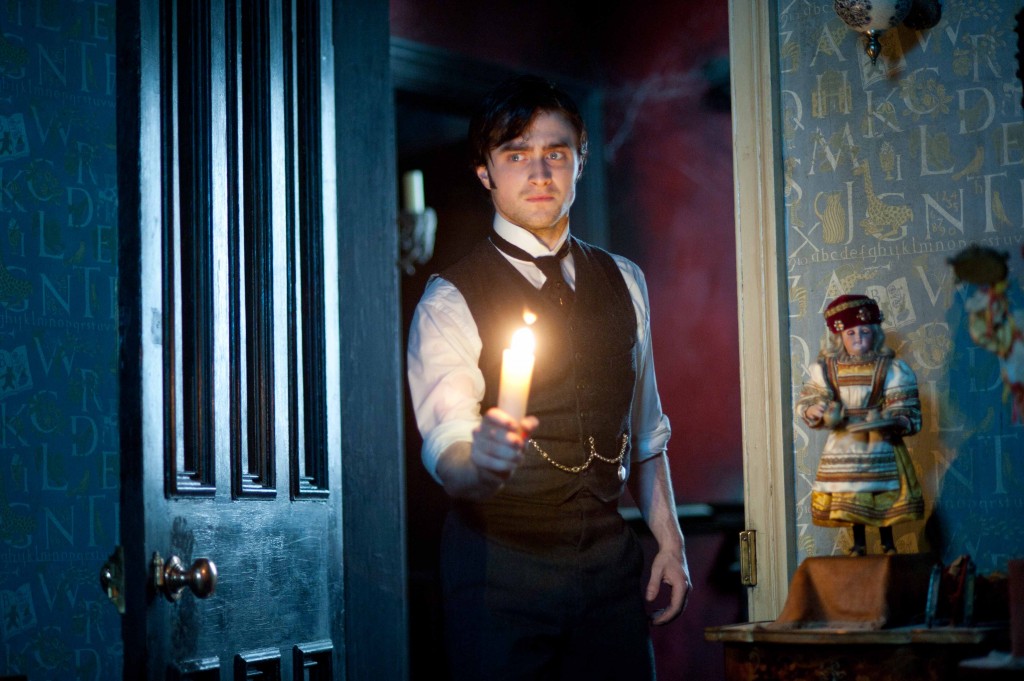
James Watkins has created a moody, genuinely chilling film with a story that, for the most part, resonated with me. The conclusion leaves a lot to be desired, mind you, in that the resolution of the film feels less cinematic than the opening two thirds, and the climax of the film lacks the rawness of the rest of the film, but in overall effect The Woman In Black leaves a lasting impression. As a thrill ride into terror, I’d be remiss if I didn’t insist you watch this film in the company of another, because if the lights are off, and the sound is way, way up, you’ll spend a lot of time clutching at each other in fright. As it was, the only thing I could clutch was my quilt. The Woman In Black is a deserving recipient of a decent score – I found it easily one of the more effective horror films in recent times, giving a more intellectually stimulating experience that provided ample chills, incredible tension, and the occasional jump-through-the-ceiling scares to warrant a good time. I recommend watching it with at least one light on.


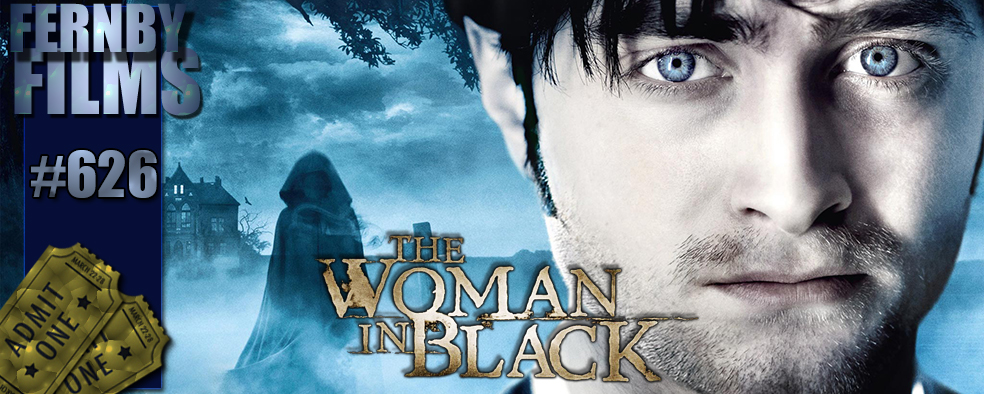


 Hammer Horror turns to theatre
Hammer Horror turns to theatre



My favourite moment – SPOILER ON THE WAY – was when the witch seemed to float directly at the screen. Loved the way Watkins set that up.
My recent post Top 10 Feel Good Movies Set In Small Town America
This film might have benefited from some 3D I think….. if it didn't already!!
i was going to write something super cool and intelligent, but then your other reader Nick up there said it first.
Damn you, Hot Rod, for having an intelligent readership!
My recent post The Booze Talkin’: My Exclusive Interview with Noa Lindberg
Ha ha, man, it's not like you to skimp out on at least something intelligent and witty to say, even when others get there first! You must be slipping!! 😉
I really liked a lot of the film and the atmosphere it created but I could not stand the fact that 95% of all the scares were jump scares and not true unsettling moments. Each scare was exentuated with loud music and it took a lot away from the film for me.
Ha ha, yeah, I guess you could look at it like that Nick! Honestly, I'm a sucker for these kinds of films and while I probably should have been annoyed like you at the constant crash-bang jump scares, the film still hooked me. Thanks for stopping in!!!